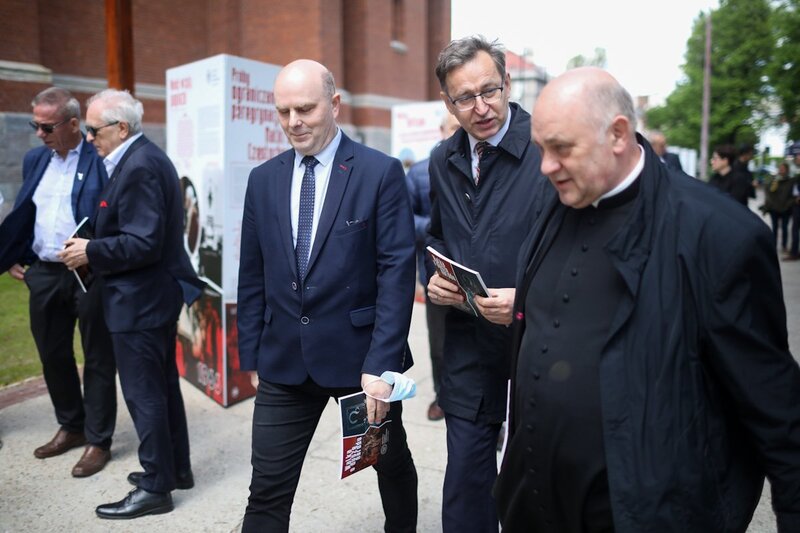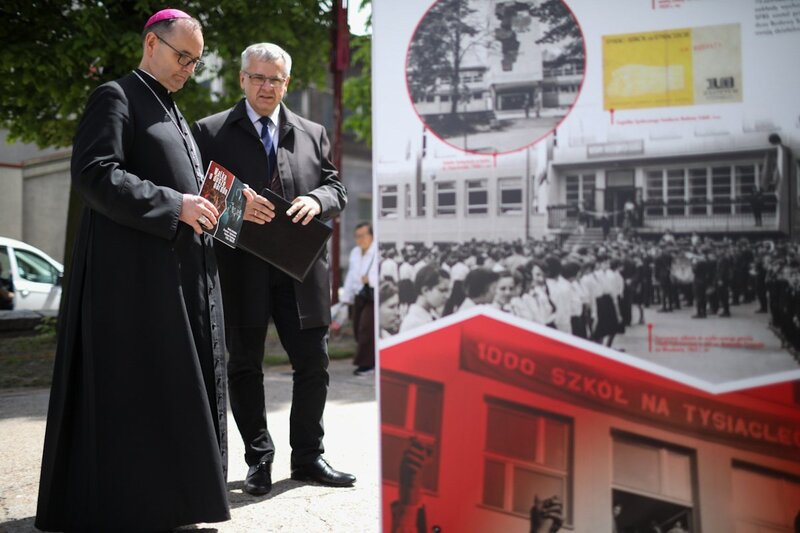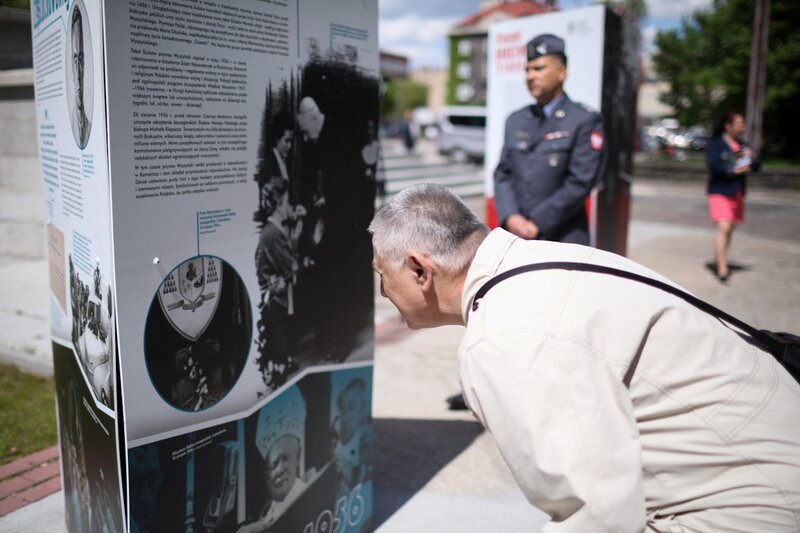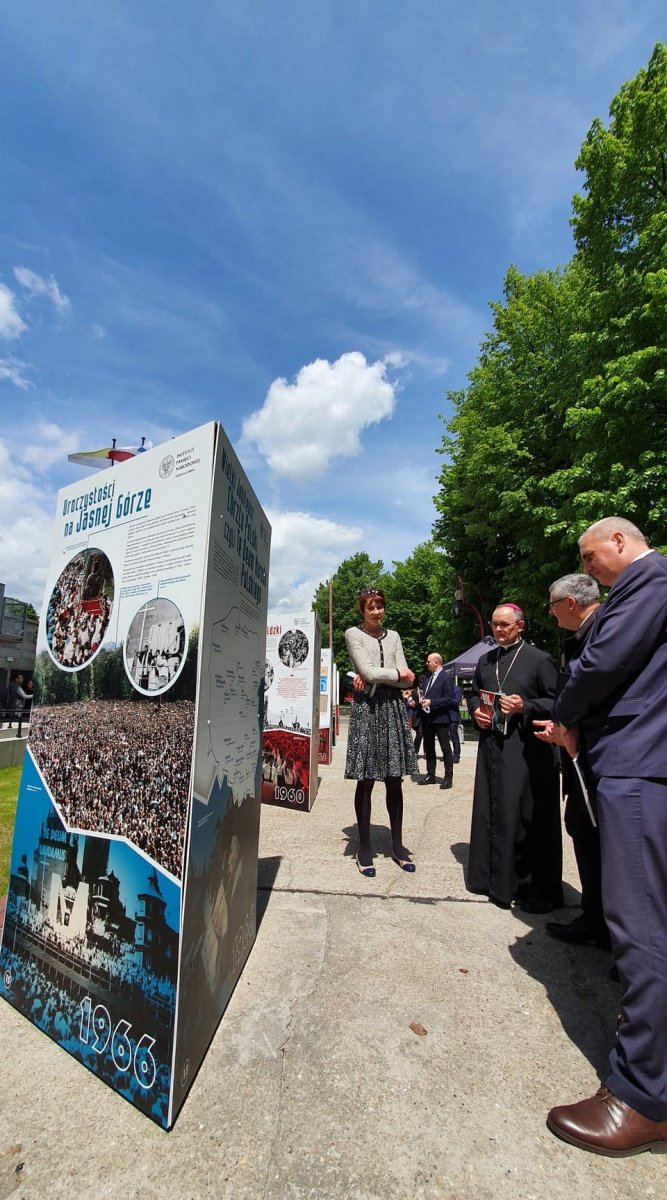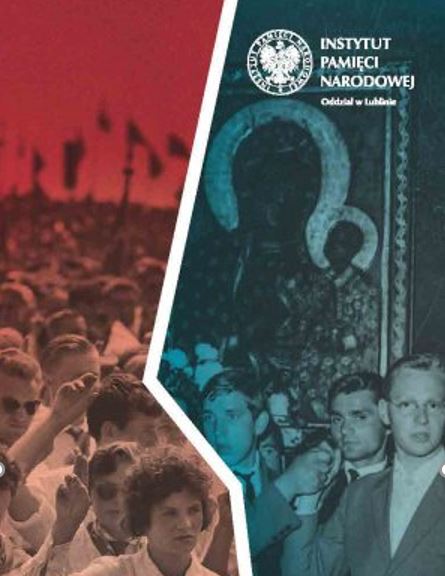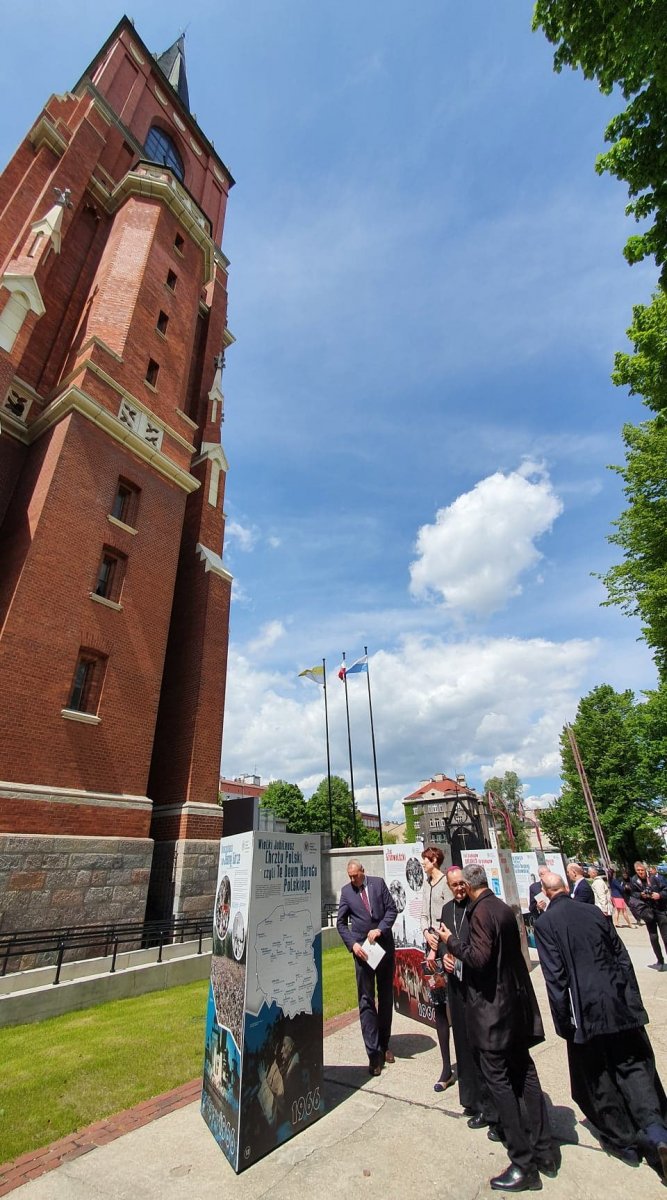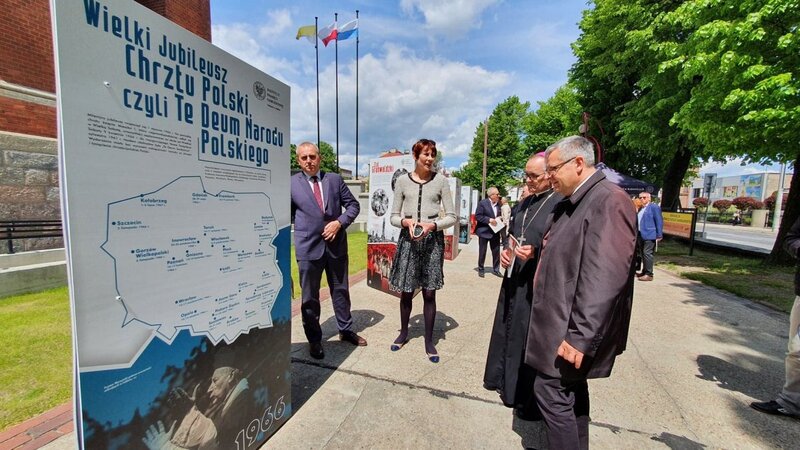On 21 May 2021, at 12.00, in front of the Archcathedral Basilica of Holy Family in Częstochowa (15/17 Krakowska Avenue), the opening of the exhibition "Fight for the Soul of the Nation. Around the Millennium of the Church and the Polish State 1956-1966 / 1967 " in the form of a briefing is taking place with the participation of: Jarosław Szarek, Ph.D., President of the Institute of National Remembrance; Archbishop Wacław Depo, Metropolitan of Częstochowa; Andrzej Sznajder, Ph.D., Director of the IPN’s Katowice Branch and Marcin Krzysztofik, Director of the IPN’s Lublin Branch, as well as Agnieszka Skura and Katarzyna Zawadka, Ph.D., the authors of the exhibition.
The event will be held with the participation of journalists and invited guests.
The exhibition, prepared by the IPN’s Office of National Education, Lublin Branch, is devoted to the program commemorating the Millennium of the Baptism of Poland carried out by the Catholic Church in Poland in the years 1956–1966 and the national celebrations of the Millennium of the Polish State held almost simultaneously.
The exhibition presents the main church ceremonies organized in Poland and abroad, their course, the involvement and interest on the part of Polish society, and the invaluable role of Primate Stefan Wyszyński. It juxtaposes these events with the "competitive" activities of the communist state apparatus aimed primarily at hindering and overshadowing religious celebrations.
The exhibition presents photos from state and church archives, press agencies, local museums and private collections. It is an outdoor exhibition consisting of 30 panels, connected into ten free-standing cubes.
The exhibition will be available to visitors until 11 June 2021.
Authors: Agnieszka Skura, Katarzyna Zawadka, Ph.D.
Scientific reviewer: Bartłomiej Noszczak, Ph.D.
Edition and proofreading: Ewa Ankiersztejn
Graphic design: Marcin Kucewicz
Artistic reviewer: Katarzyna Hudzicka-Chochorowska
Coordinator: Magdalena Śladecka
*****
Primate of Poland Stefan Wyszyński inaugurated the Millennium celebrations with a Holy Mass in the Gniezno Cathedral, but their culmination fell on 3 May on Jasna Góra, on the day of Our Lady Queen of Poland.
10 years of the Great Novena
The celebration of the millennium of Poland's Baptism was preceded by the Great Millennium Novena - a decade-long pastoral plan. Card. Wyszyński wanted to re-Catholicize Poles and stimulate universal religious involvement among society. The Great Novena and the Millennium were intended to reverse the effects of communist secularization.
The communist authorities considered these actions as the Church's encroachment into the political sphere. Each religious activity taking place outside church walls was treated in a similar way. A new anti-church offensive thus began in 1958. Its symbolic beginning was the search conducted at the Primate's Institute of the Vows of the Nation at Jasna Góra, which had, among others, prepared the celebration of the Great Novena. Soon after, the communists backed out of the concessions made to the benefit of the Church during the "thaw" of 1956. They did away with crosses from school halls, and religious lessons from schools, drastically limited the possibility of erecting churches and chapels and liquidated lower theological seminaries. Instead, they established the Association of Atheists and Free Thinkers and the Society of Secular Schools, and in 1962 a separate 4th Department of the Security Services, responsible for combating the Church.
The Great Novena stimulated millions of Catholics throughout Poland to manifest their attachment to the Catholic faith, which had prepared them for the millennium of Poland's baptism. The Millennium celebrations began in Gniezno, and later took place in Poznań, Jasna Góra, Cracow and Piekary Śląskie. They gathered hundreds of thousands of people. The pastoral program resulted in the awakening of the faithful from the lethargy after years of communist propaganda and terror. Those who met at the Millennium Masses saw that they were not alone, that hundreds of thousands of other people were also striving to free themselves from totalitarian rule.
A forgotten episode in the fight for freedom
Twelve years later, Karol Wojtyła became Pope John Paul II, after another eleven years, communism in Poland collapsed, and Poles found themselves on a long road to regaining sovereignty and civic freedom.
A fragment of a text authored by Filip Musiał Ph.D.

